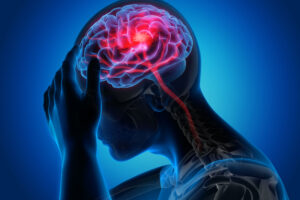Migraine is a neurological condition that is characterized by recurrent headaches that can be moderate to severe in intensity. Migraine headaches can be accompanied by other symptoms such as sensitivity to light and sound, nausea, vomiting, and changes in vision.
The exact cause of migraines is not fully understood, but it is believed to involve a combination of genetic and environmental factors that affect the brain’s chemical and electrical signals.
Click Here To Buy
Some common triggers of migraines include:
- Hormonal changes: Fluctuations in estrogen levels can trigger migraines in women, especially during menstruation, pregnancy, and menopause.
- Certain foods: Foods such as aged cheese, chocolate, alcohol, and caffeine can trigger migraines in some people.
- Stress: Emotional or physical stress can trigger migraines in some individuals.
- Sleep disturbances: Changes in sleep patterns or lack of sleep can trigger migraines.
- Environmental factors: Exposure to bright lights, loud noises, strong smells, or changes in weather can trigger migraines in some people.
Treatment for migraines may include medication, lifestyle changes, and avoiding triggers. Over-the-counter pain relievers such as aspirin, ibuprofen, and acetaminophen can be effective for some people. Prescription medications such as triptans, beta-blockers, and anti-seizure drugs may be prescribed for more severe or frequent migraines.
If you experience migraines, it’s important to speak with a healthcare provider to determine the best course of treatment for you.
MIGRAINE SYMPTOMS:
Migraine symptoms can vary from person to person but typically involve moderate to severe headaches that are accompanied by other symptoms. Some common migraine symptoms include:
- Headache: The most common symptom of migraines is a moderate to severe headache that can last for hours or days. The headache is usually on one side of the head and may feel throbbing or pulsating.
- Sensitivity to light: Many people with migraines are sensitive to light, and may experience discomfort or pain when exposed to bright lights or sunlight.
- Sensitivity to sound: Migraine sufferers may also be sensitive to sound, and may find that loud or sudden noises trigger or worsen their headache.
- Nausea and vomiting: Migraine headaches can be accompanied by nausea and vomiting, which can further exacerbate the headache.
- Visual disturbances: Some people with migraines experience visual disturbances such as flashing lights, blind spots, or temporary loss of vision.
- Dizziness or vertigo: Migraine sufferers may also experience dizziness or vertigo, which can be triggered by changes in head position.
- Tingling or numbness: Some people with migraines may experience tingling or numbness in the face, hands, or feet.
It’s important to note that not all migraines involve all of these symptoms, and some individuals may experience additional or different symptoms. If you experience recurrent headaches or other migraine symptoms, it’s important to speak with a healthcare provider for proper diagnosis and treatment.
MIGRAINE TREATMENT:
The treatment for migraines can vary depending on the severity and frequency of the headaches, as well as individual factors such as age, medical history, and other health conditions. Here are some common treatments for migraines:
- Pain relievers: Over-the-counter pain relievers such as aspirin, ibuprofen, and acetaminophen may be effective for some people with mild to moderate migraines.
- Triptans: Triptans are prescription medications that can help relieve migraine pain and other symptoms. They work by narrowing blood vessels in the brain and reducing inflammation.
- Preventive medications: If migraines occur frequently or are severe, a healthcare provider may prescribe preventive medications such as beta-blockers, antidepressants, or anti-seizure drugs.
- Lifestyle changes: Lifestyle changes such as getting enough sleep, eating a healthy diet, avoiding triggers such as caffeine, alcohol, and stress, and regular exercise can help prevent migraines.
- Alternative therapies: Some people find relief from migraines through alternative therapies such as acupuncture, massage, or biofeedback.
It’s important to work with a healthcare provider to determine the best treatment plan for your individual needs. Migraines can be a complex condition, and it may take some trial and error to find the most effective treatment.

